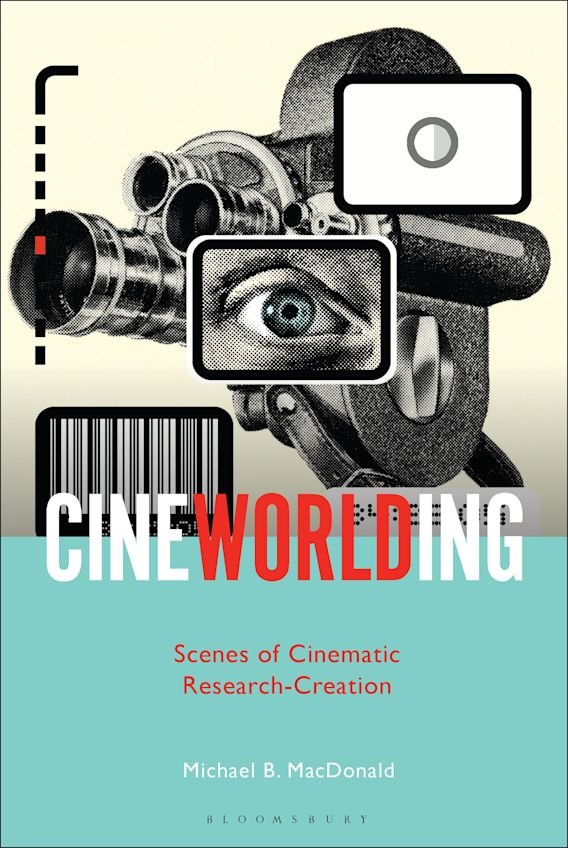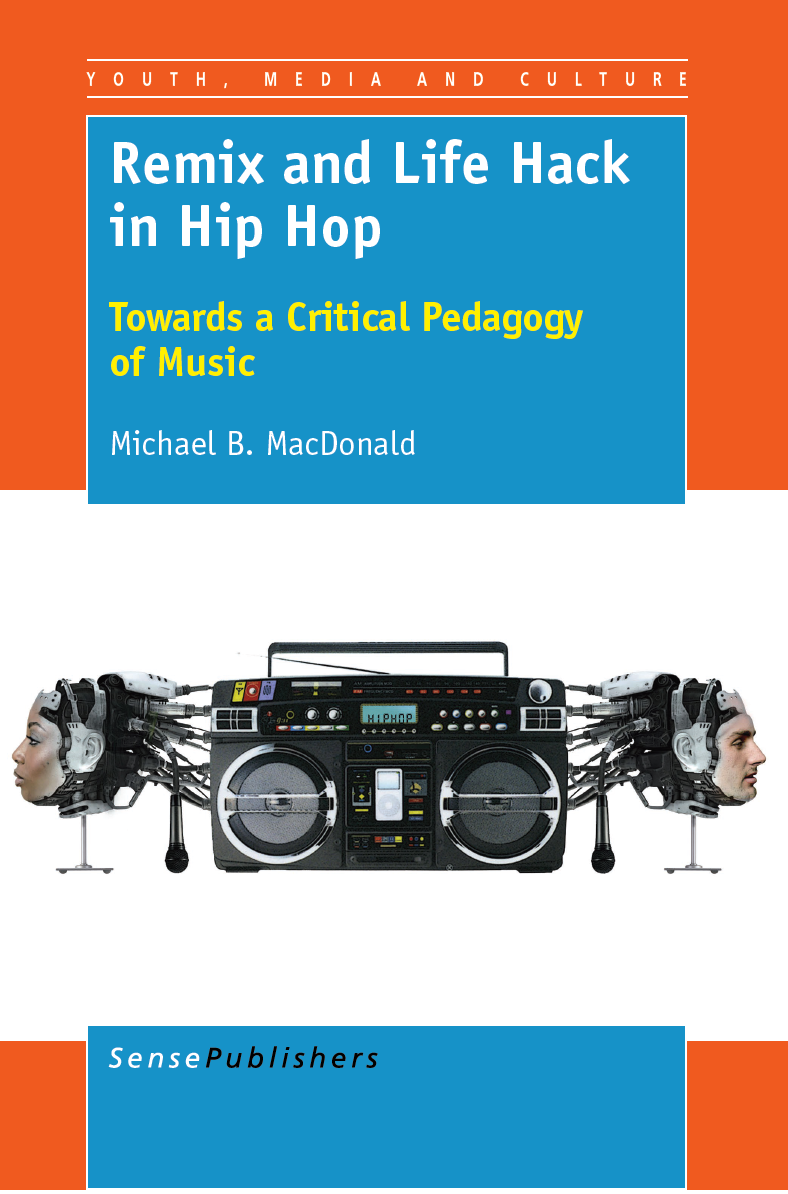From practice to theory and back: Towards a research-creation methodology for cine-ethnomusicology
Writing is an important part of my scholarly work. I believe these first three books chart a course through my ethnographic work. The first book on music festivals came out of my dissertation and postdoc work at the University of Alberta. The hiphop book came out of a multiyear community-engaged project corresponding to me starting at MacEwan University. The third book A History of Progressive Music and Youth Culture (2020) is my first book as an editor and continues my work on subcultures.
I have always used a video camera as a fieldwork tool. I have come to realize that my ethnographic work is best communicated in digital cinema. My writing is now entirely focused on cine-ethnomusicological methods through the lens of ‘cinematic esearch-creation’ and posthumanography. This is a consequence of working at the confluence of digital art creation, process philosophy (Manning and Massumi, Deleuze and Guattari), and a critical cinema of music (Harbert 2018).
CineWorlding :
Scenes of Cinematic research-creation
(Bloomsbury 2023)
Part methods text, part science fiction novel, CineWorlding approaches the possibilities of contemporary social science digital cinema with wonder, possibility, and anxiety. Ethnography, built on an ancient division between the Demos (the people) and the Ethnos (the others), needs to be rethought as posthumanography. We are also no longer human, nor sure what ‘we’ includes any longer, where human, animal, technology, environment delineate. Knowledge, information, affects, and desire are all capital, we are both producers and products of the media we use. We are cut through by digital flows, entangled by wires and data, swimming in 300 hours of new video content uploaded to YouTube every minute of every day. Recognizing the need to do more than report on the precarity of our times, CineWorlding explores the possibilities of cinematic research-creation as a way towards cinema-thinking, an approach to ethnomusicology that is always in movement, always becoming, always implicated in technology. CineWorlding proposes that the posthumanographer, just like what is studied, is always more-than, always exceeding. What does ethnomusicology in movement look like, what are its practices, its concepts? This is what CineWorlding attempts.
Make Your Own Damn Movie (DIWYF)
(in development)
Almost four billion people in the world have a smartphone in their pocket, which means there are four billion potential filmmakers. The excellent audiovisual recording capacities of these devices combined with a wide variety of social media platforms means that interested individuals have the capacity to make and share films. But in most cases, teachers, students, activists, and researchers do not make movies. Why not? After fifteen years as a scholar-filmmaker, screening films, giving public talks, and teaching filmmaking for students and activists I have come to the conclusion that the problem is not access to technology, but the know-how and confidence to use what is already in your hands (or your pocket). Smartphone filmmaking is a movement but there are few resources to support it. Further, the ones that do tend towards a DIY (do-it-yourself) aesthetic that celebrates a solitary independent creator. Filmmaking is best when it is collaborative. So why not take on a DIY punk attitude that is also social, DIWYF - Do it with your friends!
Make Your Own Damn Movie (DIWYF), is a call to action, a punk provocation for a DIY cinema movement written for community groups, activist organizations, schools, and universities alike.
CinéMusicalité:
the music-image films of Les Blank
(in development)
The audio-visual percept, what I call the music-image, has yet to be adequately theorized. This is of great importance for the emerging field of cine-ethnomusicology, music video studies, and related music research but also for ethnographic fieldwork in music. I define the music-image as a perceptual unit, a “binding” of visual and audio information that form a single percept. This assertion relies on J.J. Gibbon’s research on the operation—affordances—of visual perception and its adaptation to ethnomusicology, expanded by recent neuroscience that has shown that cortico-cortical binding occurs when the visual channel and audio channel possess high degrees of synchronicity. A degree of synchronicity is essential for the emergence of a music-image, so I am not talking about all instances of music in the environmental field, but those who because of their temporal relationships become a single multidimensional percept. I am not therefore challenging the common spatial metaphor that music is under the visual channel, a notion that exists in most documentary and film studies, including film music studies. In fact, for many reasons this spatial metaphor is perfectly suited for instances where music adds to, or comments on, action occurring. But what of audiovisual instances that are a single unit, like the music video or what might be called ‘artful’ music films, where musical action in the filmic world establishes a rhythmic territoriality. Instead of inverting the top-bottom metaphor to understand this kind of musicalized vision a new spatial metaphor is required, and the music-image is what I propose. This book will explore instances of the music-image as they appear in the music films of Les Blank with an aim to establish a richer compositional and critical vocabulary for cine-ethnomusicology.
2016, Peter Lang Press, NY
about the book
Playing for Change – performing for money and for social justice – introduces a critical pedagogy of arts-based community learning and development (A-CLD), a new discipline wherein artists learn to become educators, social workers, and community economic development agents. Challenging the assumption that acculturation into a ruling ideology of state development is necessary, this book presents a version of CLD that locates development in the production of subjectivities. The author argues that A-CLD is as concerned with the autonomous collective and the individual as it is with establishing community infrastructure. As a result, a radical new theory is proposed to explain aesthetics within arts movements, beginning not by normalizing music cultures within global capitalism, but by identifying the creation of experimental assemblages as locations of cultural resistance. This book offers a new vocabulary of cultural production to provide a critical language for a theory of anti-capitalist subjectivity and for a new type of cultural worker involved with A-CLD. Drawing from a four-year study of thirteen music festivals, Playing for Change forwards A-CLD as a locally situated, joyful, and creative resistance to the globalizing forces of neoliberalism.
2016, SensePublishers, The Netherlands
About the book
Many hiphoppas labour to sustain Hiphop Kulture in their communities far from the big stages, world tours, and hit singles enjoyed by a shockingly few American hiphoppas. The creative labour of these few mega stars is calculated in billions of dollars. But for most hiphoppas, their creative labour may never get expressed in economic terms. Instead it is expressed in social capital, the production of collective and individual subjectivities, the bonds of love that build and hold communities together, and the healing of broken hearts, broken homes, and broken neighborhoods in broken cities. Hiphop Kulture is NOT a music genre, it is MUCH more, and exploring how the sharing of aesthetic resources builds community, and how situated learning plays a necessary role in cultural sustainability draws out questions that may lead to a model of community located cultural education, and a starting point for a critical pedagogy of music.
2020, Peter Lang Press, NY
A History of Progressive Music and Youth Culture: Phishing in America
The late Dennis Carlson uses the alternative nature of the Burlington, Vermont-bred band, Phish, and the larger impact of rock n’ roll to look at youth and revolutionary music culture. A History of Progressive Music and Youth Culture is designed for those who work with or teach young people to understand the nature and origin of musical commitment and devotion. For academics, the book traces a cultural study of rock which is unlike any other discussion of music or musicology published.
editors: Shirley Steinberg, Robert Lake, and Michael B MacDonald







